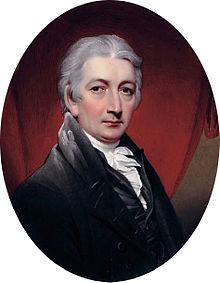Henry Bone
| Henry Bone | |
|---|---|

Portrait of Henry Bone by his son Henry Pierce Bone
|
|
| Born |
6 February 1755 Truro, Cornwall |
| Died | 17 December 1834 (aged 79) |
| Nationality | British |
| Known for | oil portraits; enamel |
| Spouse(s) | Elizabeth Vandermeulen |
| Patron(s) | |
Henry Bone RA (6 February 1755 – 17 December 1834) was an English enamel painter who was officially employed in that capacity by three successive monarchs, George III, George IV and William IV. In his early career he worked as a porcelain and jewelry painter. He was elected a Royal Academician and produced the largest enamel paintings ever seen up to that time.
Henry Bone was born in Truro, Cornwall. His father was a cabinet maker and carver of unusual skill. In 1767, Bone's family moved to Plymouth in neighbouring Devon, where Henry was apprenticed, in 1771, to William Cookworthy, the founder of the Plymouth porcelain works, and the first manufacturer of Hard-paste porcelain in England. In 1772, Bone moved, with his master, to the Bristol china works, where he remained for six years, working from 6 a.m. to 6 p.m., and studying drawing at night. His china decoration is of high merit, and is said to have been marked with the figure "1" in addition to the factory-mark, a small cross.
On the failure of the Bristol works in 1778, Bone came to London with one guinea of his own in his pocket, and five pounds borrowed from a friend. He first found employment enameling watches and fans, and afterwards in making enamel and watercolour portraits. He became a friend of John Wolcot, and, on his advice, made professional tours in Cornwall. On 24 January 1780, he married Elizabeth Vandermeulen, a descendant of the distinguished battle-painter Adam Frans van der Meulen. The couple went on to have twelve children, ten of whom survived. In the same year he exhibited his first picture at the Royal Academy, a portrait of his wife, an unusually large enamel for the period. He then gave himself up entirely to enamel-painting, and continued frequently to exhibit at the Academy, initialing most of his works.
...
Wikipedia
